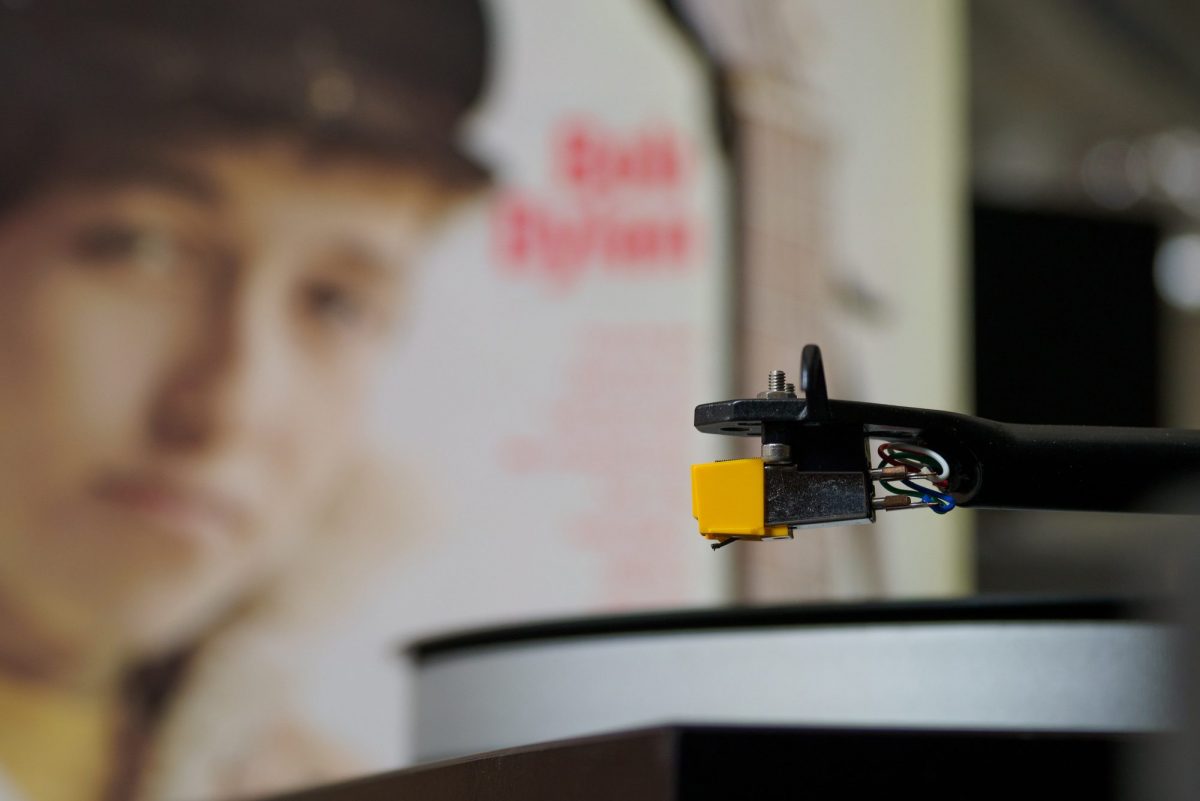Skift Take
Mark Davidson, a music historian and scholar who’s made his own music for years, is director of archives and exhibits at Tulsa’s newly opened Bob Dylan Center. The goal is prompting any visitor to be more creative in their own life. Davidson’s the perfect choice — even if he prefers not wearing white gloves.
 Every month Skift will profile someone working in the quirkiest, most incredible and surprising jobs in global travel. Skift's relentless curiosity about our industries extends to every corner of the labor market. Who knew jobs like this even existed?
Every month Skift will profile someone working in the quirkiest, most incredible and surprising jobs in global travel. Skift's relentless curiosity about our industries extends to every corner of the labor market. Who knew jobs like this even existed?
Word of warning to any would-be forgers of “authentic Bob Dylan lyrics”: Don’t let Mark Davidson see them.
After all, Davidson spends a lot of time studying the Dylan world, including the singer’s own scribbled or typed lyrics. Davidson can spot a forgery a mile away, including one case where a forger had apparently used “some sort of computer program” to imitate the quirks of Dylan’s Royal Caravan typewriter he used in the mid-‘60s.
“But there are later manuscripts in the ‘80s where Dylan might have been using the same exact typewriter, which is curious to me. And I want to know if he did,” Davidson ponders. “But I don’t have a Bob phone to ask.”
Davidson, 46, is the director of archives and exhibits and curator of the Bob Dylan Archive that is part of Tulsa’s Bob Dylan Center, which opened to to the public on May 10 and promises to turn Tulsa into the new global HQ of Dylanology. (Already music fans and scholars are booking their first trips to Oklahoma.) Davidson has the same role at the Woody Guthrie Center, which opened two doors down in 2013. The impetus for this was the acquisition of the Dylan archives, lured to Tulsa by the George Kaiser Family Foundation in 2016 (the estimated $20 million played a part too). This analog/digital “living archive” of a still-active artist is meant for scholars and researchers. “It’s vast and almost immeasurable,” as Davidson describes it, comprising hundreds of thousands of tapes, film reels, photos, letters, lyrics, notebooks, paintings, programs — all of which is daily turf for Davidson’s role.
“My knowledge of Dylan increases 150 percent weekly,” Davidson calculated.
Davidson, a Dylan fan but not a full-on “Dylan fanatic,” has a PhD in musicology and a second master’s in library science. In 2017, while living in Austin, he saw the job posting appear and he immediately applied. He’s been working there since, well before its public museum opening in May.
“It’s absolutely a dream job,” he admitted. “There are moments when it’s like, ‘oh my gosh, I’m holding the manuscript of one of the most important songs by one of the most important songwriters to have existed.’”

Sometimes it’s accidental discoveries that mean the most. Once, while poring through an unopened bag of fan mail from 1966, he “saw a letter with a Vietnam postmark.” He opened it to discover a letter from a U.S. soldier during the Vietnam War who had heard “Blowin’ in the Wind” after seeing so many friends die and felt compelled to write Dylan. “It was incredibly powerful.” It’s now on view in the center.
Davidson’s day-to-day can consist of less-glamorous tasks too, like “caring for the collections, processing items, making sure they’re safe.” For instance, while working with Dylan’s most prolific biographer — British writer Clinton Heylin — one notable aspect was managing the difference between margins of U.S. and UK paper sizes.
Archives are only part of the 29,000-square-foot center. Its public galleries opened in Tulsa’s booming Arts District, just north of downtown. Inside, visitors pass a towering iron gate Dylan welded for the site, then see an immersive film told in Dylan’s voice and walk through a chronology of his career, capped with displays of 2021’s webcast Shadow Kingdom performance/film. The production and evolution of six Dylan songs are chartered too, beginning with the 1964 song “Chimes of Freedom,” the earliest manuscript in the archives (so far).
Davidson played an integral role in putting this together, including collaborating with 59 Productions (which created the stunning, multimedia “Bowie Is” exhibit in 2013). Yes, you can see the tambourine that inspired “Tambourine Man” and the leather jacket Dylan wore in at the iconic 1965 Newport Folk Festival, but the exhibits are not simply there to gawk at.
“We’re hoping to inspire people to write something, to do something here,” Davidson said. “We are consciously not trying to be a Hard Rock Cafe, or something like that.”
Putting all this together — on time — was “a whole lot of work, a whole lot of responsibility” and Davidson has hardly had a chance yet to exhale. (Some tweaks were happening right up to opening day.) He compares this with writing his folk-music dissertation of 877 pages, which resulted in “as many nervous breakdowns.” But he did find time to have a “little bit of fun” with Dylan die-hards by leaving some intentional “Easter eggs” in the gallery space, like a bit from a 1980 San Francisco performance filmed on the sly by collector Bill Pagel that captured the last-ever appearance by guitarist Mike Bloomfield before his death. (Seriously, Dylan freaks swoon over stuff like this.)
But the big question for any archivist, of course, regards something else.
“The white glove thing? Well, most archivists argue that white gloves are not the way to go. I tend to sit in that camp. And it’s because of potential damage fumbling around with them on,” Davidson said. “However I do have half a dozen pairs right behind me.”
Robert Reid, who traveled and wrote about the world for 20-plus years, is now back in his native Oklahoma producing/hosting @OETAOK Gallery America on PBS. His latest project on the Dylan Center aired on June 2.
CORRECTION: An earlier version of this story incorrectly spelled Bill Pagel’s name.
The Daily Newsletter
Our daily coverage of the global travel industry. Written by editors and analysts from across Skift’s brands.
Have a confidential tip for Skift? Get in touch
Tags: at your service, Oklahoma, tourism
